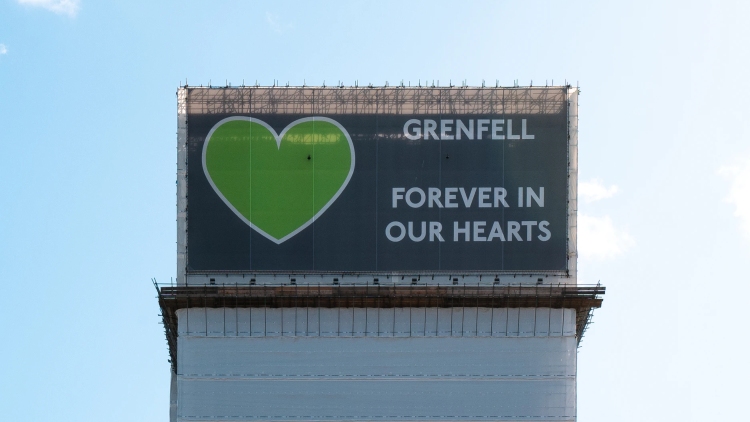
The Grenfell Tower disaster was “the predictable yet unintended consequence of the combination of the laudable desire to reduce carbon emissions coupled with an unbridled passion for deregulation”.
That’s according to one of the lawyers acting for the bereaved, survivors and relatives of the 72 victims of the blaze on 14 June 2017.
Stephanie Barwise QC was giving her opening statement at the start of module 6 of the Grenfell Tower Inquiry, which looks in detail at the actions of successive governments in addressing fire safety in the built environment.
Lead counsel to the Inquiry, Richard Millett QC, said the latest module would ask four essential questions:
- Were the risks from fire in high-rise buildings properly understood by government before the Grenfell Tower fire?
- Had lessons been learned from previous relevant incidents, both in the United Kingdom and overseas?
- What steps had and had not been taken by government to address the risks from fire in high-rise buildings?
- What motivated government in the approach which it did take to fire safety prior to the Grenfell Tower fire?
Government ‘a junior partner’
In her opening statement, Barwise argued that successive governments’ desire to deregulate and “boost” the housing construction industry had led to it becoming a “junior partner” in the relationship, which allowed the industry’s “exploitation” of the regulations.
Barwise said: “Government’s response on realising the extent of the problem was to react by concealment instead of candour. The result is a prolonged period of concealment by government which should properly be regarded as one of the major scandals of our time.”
She added: “The failure to identify and address the problem of fire safety in facades has, in one sense, transcended party politics, stretching as it does across Conservative, Labour, Conservative/Liberal Democrats coalition and finally, again, Conservative governments. That said, certain political ideals, principally deregulatory policies entwined with a radical housing policy, bear primary responsibility for the astonishing period of wilful blindness reflected in a failure to revise Approved Document B properly from 1992, and a failure to review it at all from 2006 to the time of the Grenfell fire and beyond.”
Barwise noted that the original architect of what became the coalition government’s green economy, Michael Heseltine had intended there to be “fetters on the industry”. Barwise quoted Heseltine as saying: “Markets know no morality and it is our responsibility… to bring balance to the books of life.”
But Barwise argued that there had been no fetters as a result of an “overriding deregulatory imperative”.
She added: “On the contrary, the particular brand of deregulation and dependence on Big Society involvement instead of adequate regulation enabled industry to write its own rules. None of this, however, exonerates those in the construction industry who wilfully exploited the regulations and ignored even those parts of the regulations and ADB which were clear.
“The consistent pattern of inadequate investigation and suppression of reports from Knowsley to Garnock, through The Edge and Lakanal, goes beyond mere accident and involves government collusion. Government’s tendency was to regard fires as something to be covered up or trivialised, such that the public might be reassured and avoid criticism of underlying regulations, thereby continuing to allow industry the latitude it wanted.”
Deregulation ‘degraded building control’
Meanwhile, Fire Brigades Union lawyer Martin Seaward also argued that there had been an “agenda of deregulation, privatisation and marketisation” which contributed to the disaster.
Seaward said that this agenda had been in place for “more than four decades”, across multiple governments, and had “predictably… degraded public services such as building control and fire and rescue services, thereby [weakening] enforcement of these regimes, and led to the abolition of national bodies, ambiguity and confusion in the guidance which has been left unclarified, a culture of complacency created towards fire safety, both during and after building works, and private companies being enabled to put profit over people”.
Seaward said the evolution of building safety regulation created confusion that was then exploited. He said: “Approved Document B [ADB] with ever greater complexity and flexibility, bringing concomitant ambiguity and scope for manipulation [was]… ruthlessly exploited by manufacturing companies for their own commercial self-interest.”
He also pointed to the introduction of the Building Regulations 1985, which “replaced the previously detailed technical and prescriptive regulations, covering at least 300 pages, with ‘functional requirements’ covering just 25 pages, supplemented by guidance in the ADB”. This introduction of “functional” requirements was described by Seaward as a “major change”, which brought with it “significant flexibility” that in turn “could be and was exploited by some in the construction industry”.
The Inquiry continues.










